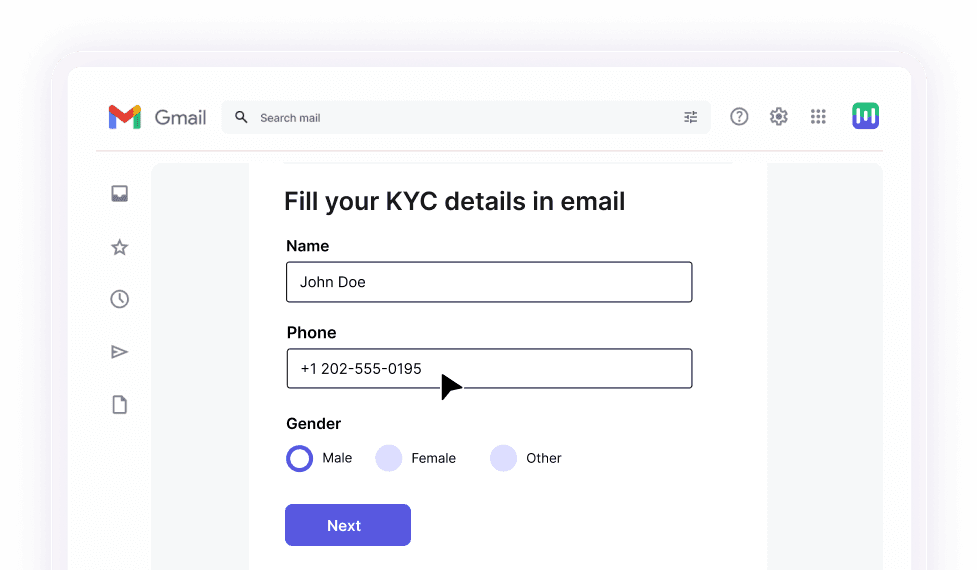User experience (UX) and customer experience (CX)
User Experience (UX) and Customer Experience (CX) are often intertwined, but they focus on different aspects of how people engage with a business.
User experience zeroes in on the interaction between a person and a specific product, service, or interface—like an app, website, or device. It’s about ensuring those interactions are smooth, intuitive, and enjoyable. For example, a strong UX means your website loads quickly, is easy to navigate, and has clear, actionable buttons that guide users effortlessly.
Customer experience, on the other hand, takes a bigger-picture view. It’s about the entire journey a customer experiences with a brand—from the first ad they encounter to their conversations with customer support and even how they feel about the brand after a purchase. CX focuses on creating positive emotional connections and fostering loyalty at every touchpoint, whether it’s online, in-store, or through follow-up communications.

💡 Related guide: 8 Transactional Email Best Practices to Improve User Experience
User experience vs customer experience
While user experience and customer experience are often used interchangeably, they serve distinct purposes in shaping how people engage with a brand. Let’s break down their key differences in the table below.
| Aspect |
Customer experience (CX) |
User experience (UX) |
| Focus |
The entire customer journey and interactions with the brand. |
The usability, functionality, and design of a specific product or service. |
| Goals |
- Build a cohesive brand experience that attracts, engages, and retains customers.
- Foster satisfaction across all stages of the buyer’s journey.
- Create mechanisms to address customer needs and preferences. |
- Design seamless and intuitive product experiences.
- Develop interactive, user-friendly products. |
| Key stakeholders |
Marketing, customer support, sales, and product teams |
UX designers, product managers, and developers |
The overlap between UX and CX
While CX and UX have their differences, they are deeply interconnected, with UX forming a key subset of the broader CX. This overlap highlights a critical dynamic: any effect on UX directly impacts CX, underscoring the importance of aligning these two elements to deliver exceptional experiences.
At its core, UX focuses on a product's usability, functionality, and design, whether a mobile app, website, or software. It ensures every interaction is intuitive, efficient, and enjoyable. CX, on the other hand, takes a broader view, encompassing the entire customer journey, from marketing and service to post-purchase interactions and emotional connections with the brand.
Since UX is part of CX, a customer’s impression of a brand often starts with how easy and enjoyable its products are to use. A seamless experience like a hassle-free checkout or a well-designed app can boost trust and satisfaction, while a clunky interface or frustrating process risks damaging both UX and the brand’s reputation.
To deliver meaningful experiences, CX teams gather data through surveys, feedback, and behavioral tracking to identify customer pain points and expectations. Meanwhile, UX teams analyze user behavior and task efficiency to improve usability. By collaborating and sharing these insights, teams can streamline navigation, reduce effort, and design intuitive solutions that improve both the product and the overall journey.
Beyond usability, CX also includes fostering emotional connections and long-term loyalty. By aligning UX and CX efforts and leveraging tools like automation or AI, businesses can deliver efficient, personalized experiences that drive satisfaction and loyalty. Together, UX and CX create the foundation for a consistent, impactful brand experience that resonates with customers at every touchpoint.
How to enhance your customer experience and user experience with Mailmodo
Mailmodo, an email marketing platform that brings interactivity and automation to emails, can play a key role in enhancing both UX and CX. Here’s how Mailmodo can help you elevate the experiences for your customers and users.
Interactive emails
User experience is all about making interactions with a product intuitive and enjoyable. With Mailmodo, you can design interactive emails that let users engage directly with content in the email. For instance, users can fill out forms, checkboxes, and even surveys right in the email. This reduces clicks and navigation, making the user journey faster, smoother, and more satisfying—core principles of excellent UX.
Personalization is key to both UX and CX. With Mailmodo, you can segment your audience using data such as behavior, demographics, or engagement and send tailored content. This ensures the right message reaches the right person, enhancing the user experience and customer journey. Delivering personalized recommendations or targeted offers creates a sense of connection, making customers feel understood and valued.
Integration across channels
Consistency across touchpoints is crucial for a strong CX. Mailmodo integrates seamlessly with your website, CRM, and other platforms, ensuring a unified experience across channels. For example, data from a form filled out in an email from Mailmodo can sync with your CRM, enabling smooth follow-up.
Mailmodo’s automation features help deliver a seamless CX by sending personalized emails based on user actions. Whether it’s a welcome message, an abandoned cart reminder, or a re-engagement email, Mailmodo ensures timely and relevant communication. Automated workflows enhance UX by providing the right content at the right moment while making customers feel supported and building loyalty and trust in your brand.
Mailmodo helps you create efficient, engaging, and memorable experiences by improving user interactions and the overall customer journey. This focus on UX and CX drives customer loyalty, ensuring they return to your brand repeatedly.
Create and send AMP emails without coding in minutes
Final words
Building strong customer relationships starts with understanding that UX is a key part of CX. By improving both, businesses can create smooth, intuitive, and personalized experiences that boost loyalty and satisfaction. Enhancing UX naturally improves CX, as each positive product interaction strengthens the overall brand experience and leaves a lasting impression on customers. While maintaining both together could be challenging, having a tool like Mailmodo can be beneficial to save time and resources and scale your efforts to provide a better customer experience.











